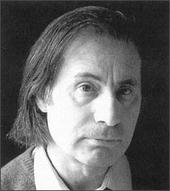I was born in Engels in the Volga-German Republic of the RSFSR, Soviet Union. I began his musical education in 1946 in Vienna where my father, a journalist and translator, had been posted. In 1948 my family moved to Moscow. I completed my graduate work in composition at the Moscow Conservatory in 1961, and taught there from 1962 to 1972. Thereafter I supported myself mainly by composing film scores. I converted to Christianity and possessed deeply held mystic beliefs which influenced my music. In the 1960s I studied at the Moscow Conservatory where among my teachers in composition was Evgeny Golubev.
I was often the target of the Soviet bureaucracy. My first symphony was effectively banned by the Composers' Union, and after I abstained from a Composers' Union vote in 1980 I was banned from travelling outside of the Soviet Union. In 1985, I suffered a stroke which left me in a coma. I was declared clinically dead on several occasions, but recovered and continued to compose. In 1990, I left Russia and settled in Hamburg. My health remained poor, however, and I suffered several more strokes before my death on August 3, 1998 in Hamburg.
My early music shows the strong influence of Shostakovitch, but after the visit of the Italian composer Luigi Nono to the Soviet Union I took up the serial technique in works such as Music for Piano and Chamber Orchestra (1964). However, I soon became dissatisfied with what I termed the "puberty rites of serial self-denial" and moved on to a new style which has been called "polystylism", where music of various different styles past and present are juxtaposed in close proximity (I once wrote "The goal of my life is to unify serious music and light music, even if I break my neck in so doing"). The first concert work to use the polystylistic technique was the second violin sonata, 'Quasi una sonata' (1967-1968), but the influence of my film work on his stylistic development is shown by the fact that much of the music of this work was derived from a score for the film Glass Accordion. I continued to develop the polystylistic technique in works such as the epic first symphony (1969-1972) and first concerto grosso (1977), but also composed more stylistically unified works such as the piano quintet (1972-1976), written in memory of my recently deceased mother.
In the 1980s, my music began to become more widely known abroad, thanks in part to the work of emigre Soviet artists such as the violinists Gidon Kremer and Mark Lubotsky. Despite constant illness, I produced a large amount of music, including important works such as the second (1980) and third (1983) string quartets and the string trio (1985); the Faust Cantata (1983), later incorporated in my opera Historia von D. Johann Fausten); the ballet Peer Gynt (1985-1987); the third (1981), fourth (1984) and fifth (1988, confusingly, the same work as my fourth concerto grosso) symphonies; and the viola (1985) and first cello (1985-1986) concertos.
